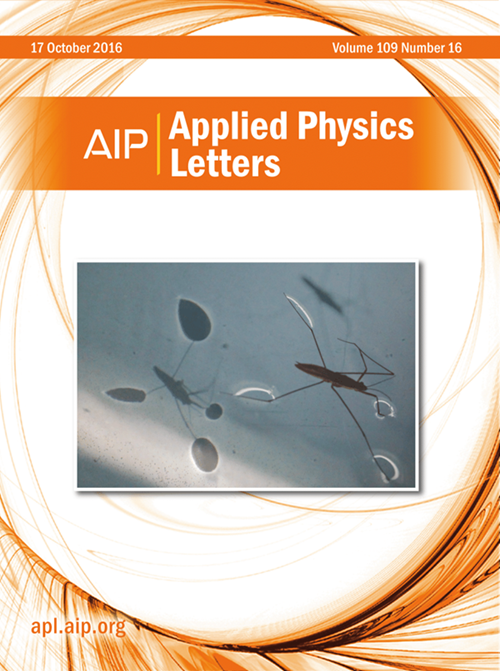Piezoelectric altermagnetism and spin-valley polarization in Janus monolayer Cr2SO
IF 3.5
2区 物理与天体物理
Q2 PHYSICS, APPLIED
引用次数: 4
Abstract
Altermagnetism can achieve spin-split bands in collinear symmetry-compensated antiferromagnets. Here, we predict altermagnetic order in Janus monolayer Cr2SO with eliminated inversion symmetry, which can realize the combination of piezoelectricity and altermagnetism in a two-dimensional (2D) material, namely, 2D piezoelectric altermagnetism. It is found that Cr2SO is an altermagnetic semiconductor, and the spin-split bands of both valence and conduction bands are near the Fermi level. The Cr2SO has large out-of-plane piezoelectricity (|d31| = 0.97 pm/V), which is highly desirable for ultrathin piezoelectric device application. Due to spin-valley locking, both spin and valley can be polarized by simply breaking the corresponding crystal symmetry with uniaxial strain. Our findings provide a platform to integrate spin, piezoelectricity, and valley in a single material, which is useful for multi-functional device applications.Janus单层Cr2SO的压电电磁和自旋谷极化
在共线对称补偿反铁磁体中,交变磁性可以实现自旋分裂带。在这里,我们预测了消除反转对称性的Janus单层Cr2SO中的变磁顺序,它可以在二维(2D)材料中实现压电和变磁的结合,即二维压电变磁。研究发现,Cr2SO是一种变磁半导体,价带和导带的自旋分裂带都在费米能级附近。Cr2SO具有较大的平面外压电性(|d31| = 0.97 pm/V),这对于超薄压电器件应用是非常期望的。由于自旋谷锁定,自旋和谷都可以通过单轴应变简单地破坏相应的晶体对称性来极化。我们的发现为在单一材料中集成自旋、压电和谷提供了一个平台,这对多功能设备应用非常有用。
本文章由计算机程序翻译,如有差异,请以英文原文为准。
求助全文
约1分钟内获得全文
求助全文
来源期刊

Applied Physics Letters
物理-物理:应用
CiteScore
6.40
自引率
10.00%
发文量
1821
审稿时长
1.6 months
期刊介绍:
Applied Physics Letters (APL) features concise, up-to-date reports on significant new findings in applied physics. Emphasizing rapid dissemination of key data and new physical insights, APL offers prompt publication of new experimental and theoretical papers reporting applications of physics phenomena to all branches of science, engineering, and modern technology.
In addition to regular articles, the journal also publishes invited Fast Track, Perspectives, and in-depth Editorials which report on cutting-edge areas in applied physics.
APL Perspectives are forward-looking invited letters which highlight recent developments or discoveries. Emphasis is placed on very recent developments, potentially disruptive technologies, open questions and possible solutions. They also include a mini-roadmap detailing where the community should direct efforts in order for the phenomena to be viable for application and the challenges associated with meeting that performance threshold. Perspectives are characterized by personal viewpoints and opinions of recognized experts in the field.
Fast Track articles are invited original research articles that report results that are particularly novel and important or provide a significant advancement in an emerging field. Because of the urgency and scientific importance of the work, the peer review process is accelerated. If, during the review process, it becomes apparent that the paper does not meet the Fast Track criterion, it is returned to a normal track.
 求助内容:
求助内容: 应助结果提醒方式:
应助结果提醒方式:


